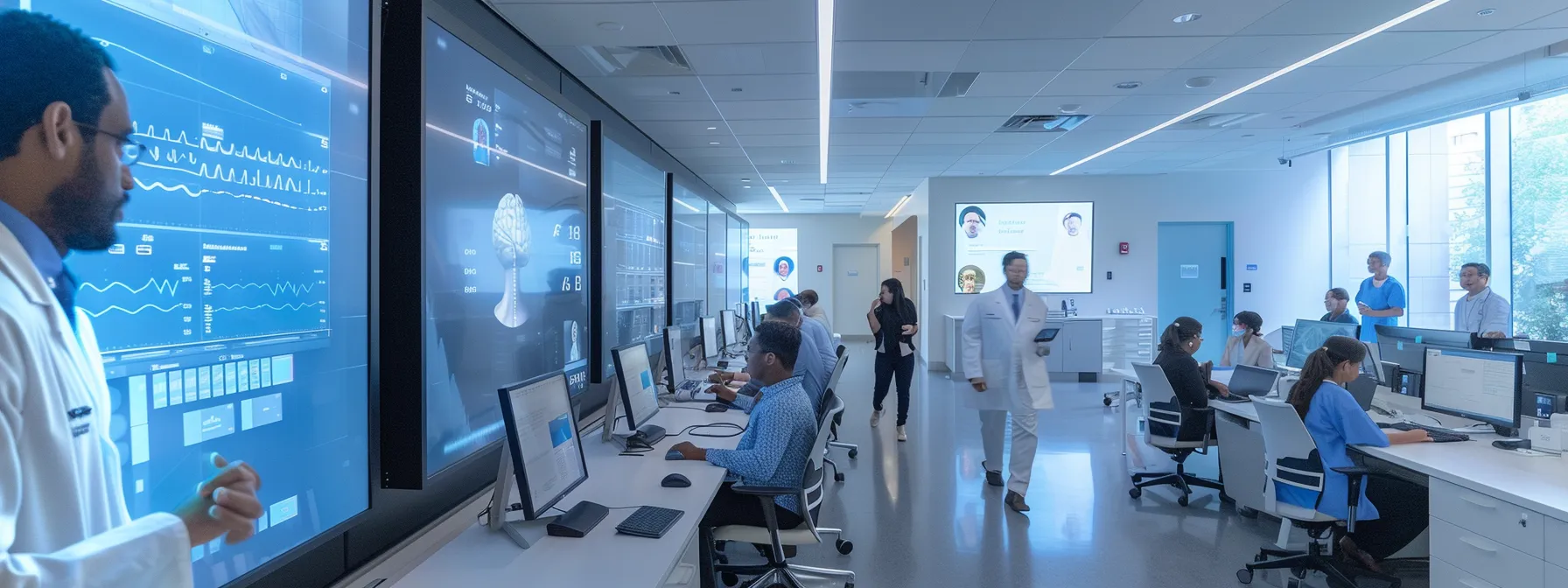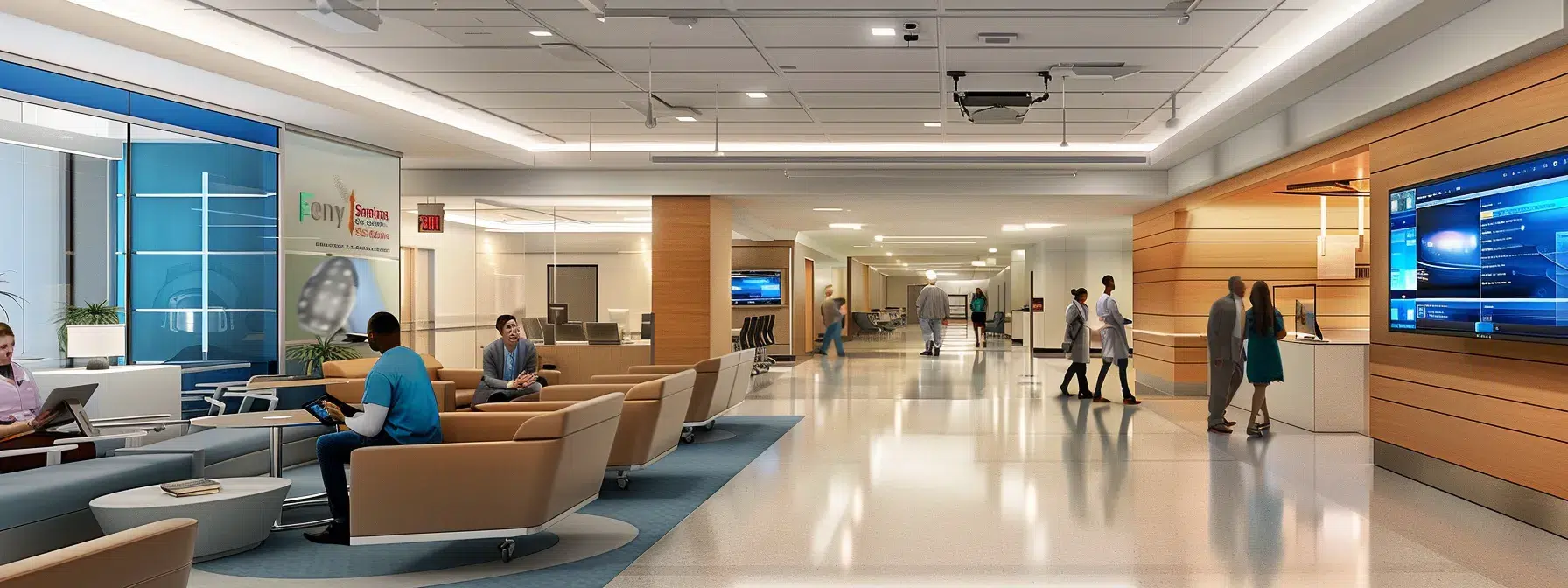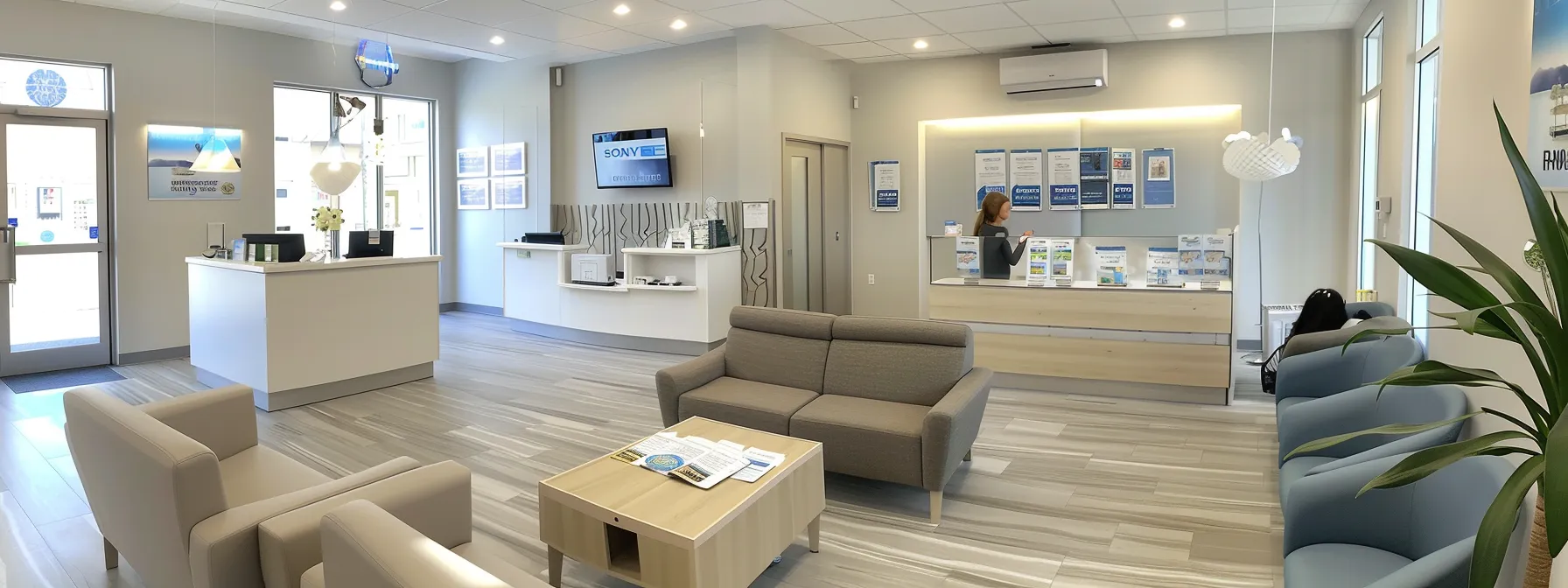Primary Care Services That Every Patient Should Know

Have you ever wondered what primary care really means for your health? Primary care serves as the foundation of a comprehensive healthcare system, offering essential services for your health needs and maintaining your well-being. This article will explore the core services provided by primary care centers and guide you in choosing the right provider for your needs. By understanding primary care, including its essential services for your health needs, and the importance of essential services for your health needs, you’ll be better equipped to manage your health effectively and access the care you need when you need it.
Understanding Primary Care and Its Significance
Understanding the essential services for your health needs is crucial for promoting wellness and preventing diseases related to your overall health.

Primary care serves as the foundation of healthcare systems worldwide. It encompasses a range of medical services provided by physicians who complete specialized training in medical school to address common health issues and promote overall wellness.
Engaging with essential services for your health needs allows you to proactively manage your health conditions and stay informed about the essential services tailored to your overall health.
Utilizing essential services for your health needs within primary care ensures you receive timely support and guidance tailored to your unique health circumstances.
In today’s fast-paced world, essential services for your health needs often begin with primary care. These services are crucial for early diagnosis and management of health issues, helping you stay proactive about your well-being. Understanding essential services for your health needs is vital to making informed health decisions for your future.
These healthcare professionals offer primary care services in various settings, including private practices, community health centers, and hospitals. They act as the first point of contact for patients seeking medical attention, providing comprehensive and continuous care.
By embracing the essential services for your health needs, you contribute to a healthier community and better overall health outcomes for everyone.
A primary care practice typically focuses on preventive care, health maintenance, and management of chronic conditions. This approach helps reduce the burden on emergency departments by addressing health concerns before they escalate into serious issues.
Primary care physicians play a crucial role in coordinating patient care across different specialties and healthcare providers. They maintain long-term relationships with patients, offering personalized care tailored to individual needs and circumstances.
When you prioritize essential services for your health needs, you empower yourself to take control of your health journey and make informed choices.
Being aware of the essential services for your health needs can help you make informed decisions about your health and wellness to achieve better outcomes.
By emphasizing preventive measures and early intervention, primary care contributes significantly to improving population health outcomes and reducing healthcare costs. It forms an essential component of a well-functioning healthcare system, ensuring accessible and efficient medical care for communities, particularly through essential services for your health needs.
Core Services Offered in Primary Care

Primary care encompasses a range of essential services for your health needs provided by health care professionals, including physicians and nurse practitioners in family medicine. These services cover essential health needs such as preventive care, chronic condition management, acute care, mental health support, and pediatric care. Primary care providers utilize medical records to offer comprehensive, personalized care that addresses patients’ diverse health needs.
Incorporating essential services for your health needs into your routine can vastly improve your quality of life.
Regularly accessing essential services for your health needs enables you to stay ahead of potential health issues.
Evaluating how essential services for your health needs fit into your overall health strategy can lead to better health management.
Knowing the essential services for your health needs equips you to navigate the complexities of healthcare more effectively.
Understanding accessibility to essential services for your health needs can significantly enhance your healthcare experience.
Engaging with various essential services for your health needs allows for a more rounded approach to health management.
Preventive Care and Health Screenings
Primary care centers prioritize preventive care and health screenings as essential components of comprehensive medical services. Health professionals in these settings conduct regular check-ups, vaccinations, and screenings to detect potential health issues early, promoting health equity among patients.
These preventive measures include various screenings tailored to age, gender, and individual risk factors. Medical professionals may perform blood pressure checks, cholesterol tests, diabetes screenings, and cancer screenings to identify and address health concerns proactively.
Incorporating essential services for your health needs in daily life fosters better health outcomes.
By emphasizing preventive care, primary care providers aim to reduce the burden of chronic diseases and improve overall health outcomes. Patients can often schedule these essential screenings by phone or fax, ensuring easy access to these vital services that form the foundation of effective primary care.
Management of Chronic Conditions
Primary care physicians play a crucial role in managing chronic conditions such as diabetes, hypertension, and asthma. They develop personalized treatment plans, monitor disease progression, and adjust medications as needed to help patients maintain optimal health.
Regular check-ups and ongoing care from primary care providers ensure that chronic conditions are effectively managed, reducing the risk of complications and medical emergencies. These healthcare professionals work closely with patients to educate them about their conditions and promote self-management strategies.
In cases where specialized care is required, primary care physicians coordinate with other healthcare providers, including nursing staff and specialists, to ensure comprehensive treatment. This collaborative approach helps patients navigate complex health issues and receive the most appropriate care for their chronic conditions.
Acute Care Services
Primary care providers offer acute care services to address sudden illnesses, injuries, and exacerbations of chronic conditions. These services encompass a wide range of medical interventions, from treating common infections to managing acute pain and providing emergency care when necessary.
In geriatrics, acute care often involves addressing complex health issues in older adults, while pulmonary function testing aids in diagnosing and managing respiratory conditions. Primary care physicians collaborate with specialists in obstetrics and other fields to ensure comprehensive care for patients with diverse medical needs.
Acute care in primary medicine may include various therapies, such as physical therapy for injuries or respiratory therapy for pulmonary conditions. This integrated approach allows primary care providers to deliver timely and effective treatment, reducing the need for hospital admissions and improving patient outcomes.
Mental Health Support
Primary care doctors and physician assistants play a crucial role in providing mental health support within the primary care setting. They screen patients for common mental health conditions such as depression, anxiety, and asthma-related stress, offering initial assessments and treatment plans. For more detail on how this integrates within a broader spectrum of care, Thrive’s comprehensive guide offers deep insights: comprehensive guide to finding the best mental health therapist.
Prioritizing essential services for your health needs is key to fostering sustainable health habits.
These healthcare professionals can prescribe medications, provide counseling, and refer patients to specialized mental health services when necessary. The integration of mental health support in primary care helps reduce stigma and improves access to essential mental health resources for patients.
Many primary care practices now offer patient portals, allowing patients to easily communicate with their healthcare providers about mental health concerns and access educational materials. This technology enhances the continuity of care and empowers patients to actively participate in their mental health management.
Pediatric Care and Family Medicine
Primary care centers often serve as a medical home for families, providing comprehensive pediatric care and family medicine services. These centers offer quality health care for children, from routine check-ups and vaccinations to treating common childhood illnesses and managing chronic conditions.
General internal medicine practitioners in primary care settings collaborate with pediatricians to ensure seamless care transitions as children grow into adulthood. This integrated approach allows for continuity of care and addresses the unique health needs of each family member throughout their life stages.
Some primary care practices offer concierge medicine options, providing enhanced access to pediatric and family medicine services. This model allows for more personalized care, extended appointment times, and direct communication with healthcare providers, ensuring families receive comprehensive and tailored medical attention.
Choosing the Right Primary Care Center

Selecting the right primary care center is crucial for effective health management. This section explores key factors to consider when choosing a facility, including location accessibility, provider credentials, and patient-centered care approaches. Understanding these elements helps patients find community health centers or primary care providers that offer comprehensive health care services, from routine check-ups to emergency care and radiology, aligning with their individual needs and preferences.
Factors to Consider When Selecting a Facility
When selecting a primary care facility, patients should consider the range of services offered, including general surgery, pediatrics, and ambulatory care. A comprehensive center that provides diverse medical specialties can address various health needs efficiently, reducing the need for multiple healthcare visits.
Accessibility of primary care locations plays a crucial role in ensuring regular health maintenance. Patients should evaluate the proximity of the facility to their home or workplace, as well as the availability of public transportation options, to facilitate easy access to routine check-ups and urgent care services.
The quality of medical equipment and facilities, particularly for surgery and specialized treatments, significantly impacts patient care. Prospective patients should inquire about the center’s technological capabilities, such as advanced diagnostic tools and modern surgical suites, to ensure they receive high-quality medical care.
Importance of Location and Accessibility
The location of primary care practices significantly impacts patients’ ability to manage their health effectively. Practices situated near residential areas or workplaces make it easier for individuals to schedule regular check-ups and receive timely care for acute conditions. This proximity encourages patients to seek medical attention promptly, potentially preventing the progression of diseases.
Accessibility extends beyond physical location to include factors such as public transportation options and parking availability. Primary care centers with good accessibility enable patients to find a doctor more easily, facilitating consistent care for chronic conditions like those managed in endocrinology. This ease of access is particularly crucial for patients with mobility issues or those requiring frequent medical attention.
Internal medicine specialists often emphasize the importance of choosing a conveniently located primary care provider to ensure continuity of care. Patients are more likely to adhere to treatment plans and attend follow-up appointments when their healthcare facility is easily accessible. This consistency in care can lead to better health outcomes and more effective management of complex medical conditions.
Evaluating Provider Credentials and Experience
When selecting a primary care doctor, patients should carefully evaluate the provider’s credentials and experience. Health centers often employ primary care physicians with diverse backgrounds in internal medicine, family practice, or pediatrics. Verifying a doctor’s board certification and years of experience can provide insight into their expertise and ability to manage various health conditions.
Patients should consider the primary care physician‘s approach to medication management and treatment planning. Experienced doctors often have a comprehensive understanding of different medications and their interactions, which is crucial for managing complex health conditions. Health insurance coverage for specific providers should also factor into the decision-making process.
Many health centers offer detailed information about their primary care physicians‘ qualifications and specialties on their websites or through patient portals. Patients can use these resources to research potential providers, ensuring they find a doctor whose expertise aligns with their specific health needs and preferences. This proactive approach helps establish a strong doctor-patient relationship founded on trust and competence.
Understanding Patient-Centered Care
Patient-centered care forms the cornerstone of modern primary care practices. Physicians at health centers prioritize this approach, focusing on individual patient needs and preferences to deliver personalized, comprehensive care. This model emphasizes active patient participation in decision-making processes, fostering a collaborative relationship between healthcare providers and patients.
In patient-centered care, general practitioners consider not only physical health but also mental health and social factors affecting well-being. Health centers implementing this approach often offer integrated services, combining medical care with mental health support and social resources to address patients’ holistic needs. This comprehensive strategy leads to improved health outcomes and increased patient satisfaction.
Effective communication plays a crucial role in patient-centered care. Physicians in health centers employing this model prioritize clear, empathetic communication, ensuring patients fully understand their health conditions and treatment options. This approach empowers patients to make informed decisions about their care, leading to better adherence to treatment plans and more successful health management.
The Role of Technology in Primary Care Services

Participating in essential services for your health needs can enhance your knowledge and awareness of personal health.
Technology plays a pivotal role in modernizing primary care services. Telehealth expands access to healthcare, while electronic health records streamline information management. Patient portals enhance communication between providers and patients. These advancements improve care delivery, increase efficiency, and empower patients to actively participate in their health management.
Benefits of Telehealth in Primary Care
Being proactive with the essential services for your health needs can lead to improved health resilience.
Telehealth has revolutionized primary care by offering convenient access to healthcare services. Patients can now consult with their primary care providers remotely, eliminating the need for in-person visits for routine check-ups or minor health concerns. This accessibility proves particularly beneficial for individuals with mobility issues or those living in rural areas with limited healthcare facilities.
Regular engagement with essential services for your health needs ensures that you remain informed and prepared for health challenges.
By utilizing essential services for your health needs, you can create a supportive health network.
Understanding how essential services for your health needs relate to your lifestyle can enhance your health trajectory.
Virtual consultations enable primary care physicians to efficiently manage chronic conditions and provide follow-up care. Through video calls or secure messaging platforms, doctors can assess symptoms, adjust medications, and offer guidance on self-management strategies. This continuous care helps prevent complications and reduces the likelihood of hospital admissions.
Identifying the essential services for your health needs helps tailor your healthcare experience to suit personal preferences.
Engaging with essential services for your health needs means prioritizing your well-being each day.
Telehealth in primary care also enhances patient engagement and education. Healthcare providers can easily share educational resources, demonstrate proper medication use, or discuss lifestyle modifications during virtual appointments. This increased interaction empowers patients to take a more active role in their health management, leading to improved outcomes and patient satisfaction.
Electronic Health Records and Their Impact
All patients can benefit from understanding the essential services for your health needs as part of their health journey.
Being knowledgeable about the essential services for your health needs empowers you to ask the right questions during appointments.
Electronic Health Records (EHRs) have transformed primary care by centralizing patient information and improving care coordination. These digital systems allow healthcare providers to access comprehensive patient histories, test results, and treatment plans in real-time, leading to more informed decision-making and reduced medical errors.
By completing the circle of care with essential services for your health needs, you ensure comprehensive health management.
EHRs facilitate seamless communication between primary care physicians and specialists, enhancing continuity of care. This interoperability enables healthcare providers to share crucial patient data securely, ensuring that all members of a patient‘s care team have access to up-to-date information, regardless of their location or healthcare setting.
Integrating essential services for your health needs into your lifestyle encourages sustained health improvements.
Evaluating personal health through the lens of essential services for your health needs can lead to beneficial lifestyle adjustments.
The implementation of EHRs in primary care practices has streamlined administrative tasks, allowing healthcare providers to spend more time focusing on patient care. Automated reminders for preventive screenings, medication refills, and follow-up appointments help improve patient outcomes and adherence to treatment plans, ultimately leading to better overall health management.
Patient Portals for Enhanced Communication
Investing time in understanding the essential services for your health needs enhances your health awareness.
Patient portals have revolutionized communication between primary care providers and patients. These secure online platforms allow patients to access their health information, view test results, and communicate with their healthcare team. By providing 24/7 access to medical records, patient portals empower individuals to take a more active role in managing their health.
Being proactive about the essential services for your health needs contributes to a healthier future.
These digital tools streamline administrative tasks in primary care settings. Patients can use portals to schedule appointments, request prescription refills, and update personal information. This efficiency reduces phone calls and wait times, allowing healthcare providers to focus more on direct patient care and improving overall practice productivity.
Patient portals enhance continuity of care by facilitating ongoing communication between visits. Patients can send secure messages to their primary care team, ask questions about their treatment plans, and receive timely responses. This continuous engagement supports better health outcomes, especially for those managing chronic conditions, by enabling prompt addressing of concerns and reinforcing treatment adherence.
The Importance of a Primary Care Team

Primary care teams form the backbone of effective healthcare delivery. These teams consist of primary care physicians, nurse practitioners, physician assistants, and allied health professionals. Each member plays a vital role in providing comprehensive patient care, from diagnosis and treatment to health promotion and disease prevention. Their collaborative approach ensures patients receive holistic, coordinated care tailored to their individual needs.
Roles of Primary Care Physicians
Primary care physicians serve as the cornerstone of healthcare, providing comprehensive medical services to patients of all ages. They diagnose and treat a wide range of common health conditions, conduct routine check-ups, and offer preventive care to maintain overall wellness.
These healthcare professionals act as care coordinators, managing patients’ long-term health needs and referring them to specialists when necessary. They develop personalized treatment plans, considering each patient‘s medical history, lifestyle factors, and individual health goals to ensure optimal care outcomes.
Primary care physicians also play a crucial role in health education and disease prevention. They counsel patients on lifestyle modifications, provide immunizations, and perform screenings to detect potential health issues early, helping patients maintain good health and prevent the onset of chronic diseases.
Contributions of Nurse Practitioners and Physician Assistants
Nurse practitioners and physician assistants play vital roles in primary care teams, expanding access to healthcare services. These professionals conduct physical examinations, diagnose common illnesses, and prescribe medications, effectively complementing the work of primary care physicians.
In many primary care settings, nurse practitioners and physician assistants manage their own patient panels, providing continuous care for chronic conditions and offering preventive health services. Their advanced training allows them to perform various procedures and interpret diagnostic tests, enhancing the overall capacity of primary care practices.
Access to essential services for your health needs is vital for maintaining holistic health in today’s world.
Collaboration between nurse practitioners, physician assistants, and primary care physicians creates a comprehensive care model. This team-based approach ensures patients receive timely, high-quality care, improving health outcomes and patient satisfaction while reducing the burden on healthcare systems.
Understanding the essential services for your health needs expands your health literacy and improves engagement in your care.
Emphasizing the essential services for your health needs can lead to better health practices.
The Impact of Allied Health Professionals
Ultimately, the essential services for your health needs empower you to take charge of your health journey.
Allied health professionals contribute significantly to primary care teams, offering specialized expertise in areas such as nutrition, physical therapy, and mental health. These professionals work alongside physicians and nurses to provide comprehensive care, addressing patients’ diverse health needs and supporting overall wellness.
Dietitians and nutritionists in primary care settings play a crucial role in managing chronic conditions like diabetes and obesity. They develop personalized meal plans, educate patients on healthy eating habits, and collaborate with other team members to ensure dietary interventions align with overall treatment strategies.
In conclusion, the integration of essential services for your health needs not only benefits individual patients but also enhances community health.
Physical therapists and occupational therapists enhance primary care by providing targeted interventions for patients with mobility issues or recovering from injuries. Their expertise in rehabilitation and functional improvement helps patients regain independence and improve their quality of life, complementing the medical care provided by primary care physicians.
Utilizing the essential services for your health needs can foster stronger relationships with healthcare providers.
By understanding the essential services for your health needs, patients can navigate health systems more efficiently.
How to Access Primary Care Services

Accessing primary care services involves understanding insurance options, finding a suitable provider, and managing appointments effectively. This section explores key considerations for insurance coverage, strategies for selecting the right primary care provider, and tips for scheduling and maintaining regular check-ups. By navigating these aspects, patients can ensure seamless access to essential healthcare services.
Insurance Considerations and Options
Understanding insurance options is crucial for accessing primary care services effectively. Patients should review their health insurance plans to determine coverage for preventive care, routine check-ups, and specialist referrals. Many insurance providers offer networks of preferred primary care physicians, which can significantly reduce out-of-pocket costs for patients.
For those without insurance, community health centers often provide sliding scale fee structures based on income. These centers offer essential primary care services, including preventive screenings and chronic disease management, making healthcare more accessible to uninsured or underinsured individuals.
Patients should also consider Health Savings Accounts (HSAs) or Flexible Spending Accounts (FSAs) as options to manage healthcare costs. These tax-advantaged accounts allow individuals to set aside money for medical expenses, including primary care visits, providing financial flexibility in accessing necessary healthcare services.
Finding a Primary Care Provider
Finding a primary care provider begins with researching local healthcare options. Patients can utilize online directories, insurance provider networks, or community health center listings to identify potential providers in their area. Considering factors such as location, office hours, and accepted insurance plans helps narrow down the choices.
Once potential providers are identified, patients should evaluate their credentials and specialties. Reviewing the provider’s education, board certifications, and areas of expertise ensures they align with the patient‘s specific health needs. Many healthcare systems offer online profiles of their providers, allowing patients to make informed decisions.
After selecting a provider, patients should schedule an initial consultation to assess compatibility. This visit allows patients to discuss their health history, ask questions, and evaluate the provider’s communication style and approach to care. Establishing a good rapport with a primary care provider fosters a long-term healthcare relationship, leading to better health outcomes.
Scheduling Appointments and Follow-Ups
Scheduling appointments with primary care providers has become more convenient through online booking systems and patient portals. Patients can easily select available time slots that fit their schedules, reducing wait times and improving access to care. Many practices also offer same-day or urgent care appointments for acute health concerns.
Regular follow-up appointments play a crucial role in managing chronic conditions and maintaining overall health. Primary care providers often recommend scheduling these visits in advance, ensuring continuity of care and timely interventions. Patients should keep a record of their appointments and any questions they want to discuss during their visits.
Telemedicine options have expanded the flexibility of appointment scheduling. Virtual consultations allow patients to connect with their primary care providers for routine check-ups or minor health issues without leaving home. This approach saves time and increases accessibility, particularly for patients with mobility challenges or those living in remote areas.
Common Questions About Primary Care

Primary care visits can raise many questions for patients. This section addresses common concerns, including what to expect during a first visit, recommended frequency of check-ups, and handling emergency situations. Understanding these aspects helps patients navigate primary care services effectively and make the most of their healthcare experiences.
What Should You Expect During Your First Visit?
During the first visit to a primary care provider, patients can expect a comprehensive health assessment. The provider will review the patient‘s medical history, current medications, and any existing health concerns. This initial consultation typically includes a physical examination and may involve basic health screenings such as blood pressure checks and weight measurements.
Patients should come prepared with a list of their current medications, including over-the-counter drugs and supplements. It’s also helpful to bring any relevant medical records or test results from previous healthcare providers. This information allows the primary care physician to develop a complete picture of the patient‘s health status and create an appropriate care plan.
The first visit is an opportunity for patients to discuss their health goals and any specific concerns with their provider. Patients should feel comfortable asking questions about their health, preventive care measures, and the provider’s approach to treatment. This open communication helps establish a strong doctor-patient relationship and ensures that care is tailored to the individual’s needs and preferences.
How Often Should You Visit Your Primary Care Provider?
The frequency of primary care visits varies based on individual health needs and risk factors. Generally, healthy adults should schedule annual check-ups to maintain overall wellness and detect potential health issues early. These regular visits allow primary care providers to monitor vital signs, conduct preventive screenings, and update immunizations as needed.
Patients with chronic conditions or ongoing health concerns may require more frequent visits. For example, individuals managing diabetes or hypertension might need to see their primary care provider every three to six months to monitor their condition and adjust treatment plans. The provider will recommend an appropriate visit schedule based on the patient‘s specific health status and treatment goals.
Older adults or those with complex medical histories may benefit from more frequent check-ups, potentially every six months. These visits allow for closer monitoring of age-related health changes and medication management. Additionally, patients should contact their primary care provider promptly if they experience new or concerning symptoms between scheduled appointments, ensuring timely intervention and care.
What to Do in Case of Emergency Situations?
In emergency situations requiring immediate medical attention, patients should call 911 or go to the nearest emergency room. Primary care providers typically offer guidance on handling urgent health issues during regular office hours, but life-threatening conditions warrant immediate emergency services.
For non-life-threatening but urgent concerns outside of regular office hours, many primary care practices provide after-hours phone services or urgent care options. Patients should familiarize themselves with their provider’s policies for addressing urgent health needs to ensure timely care when necessary.
Following an emergency, patients should inform their primary care provider about the incident and any treatments received. This communication allows for proper follow-up care and ensures that the primary care team can update medical records and adjust ongoing treatment plans as needed.
Conclusion
Primary care forms the cornerstone of comprehensive healthcare, offering essential services from preventive screenings to chronic disease management. By choosing the right primary care provider and facility, patients can access a wide range of medical services tailored to their individual needs, ensuring continuity of care and improved health outcomes. Technology has revolutionized primary care, enhancing communication, streamlining processes, and expanding access through telehealth options. Understanding and utilizing primary care services effectively empowers individuals to take control of their health, leading to better overall well-being and reduced healthcare costs.